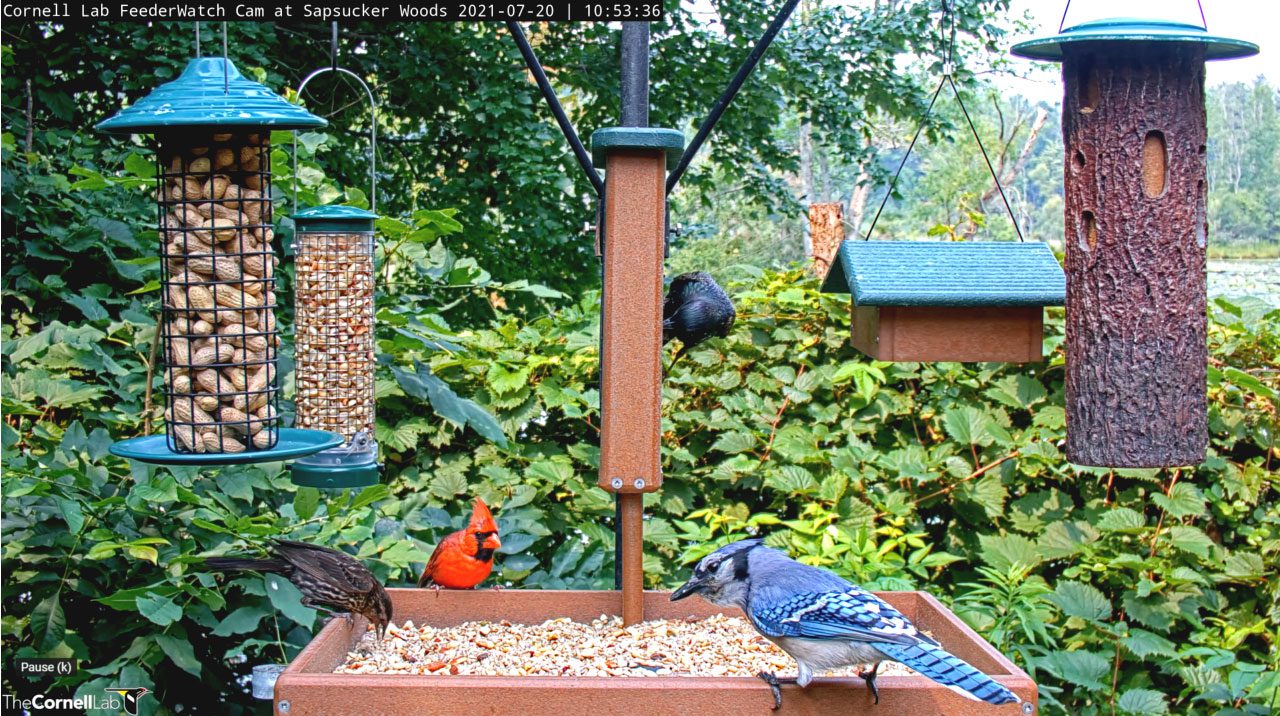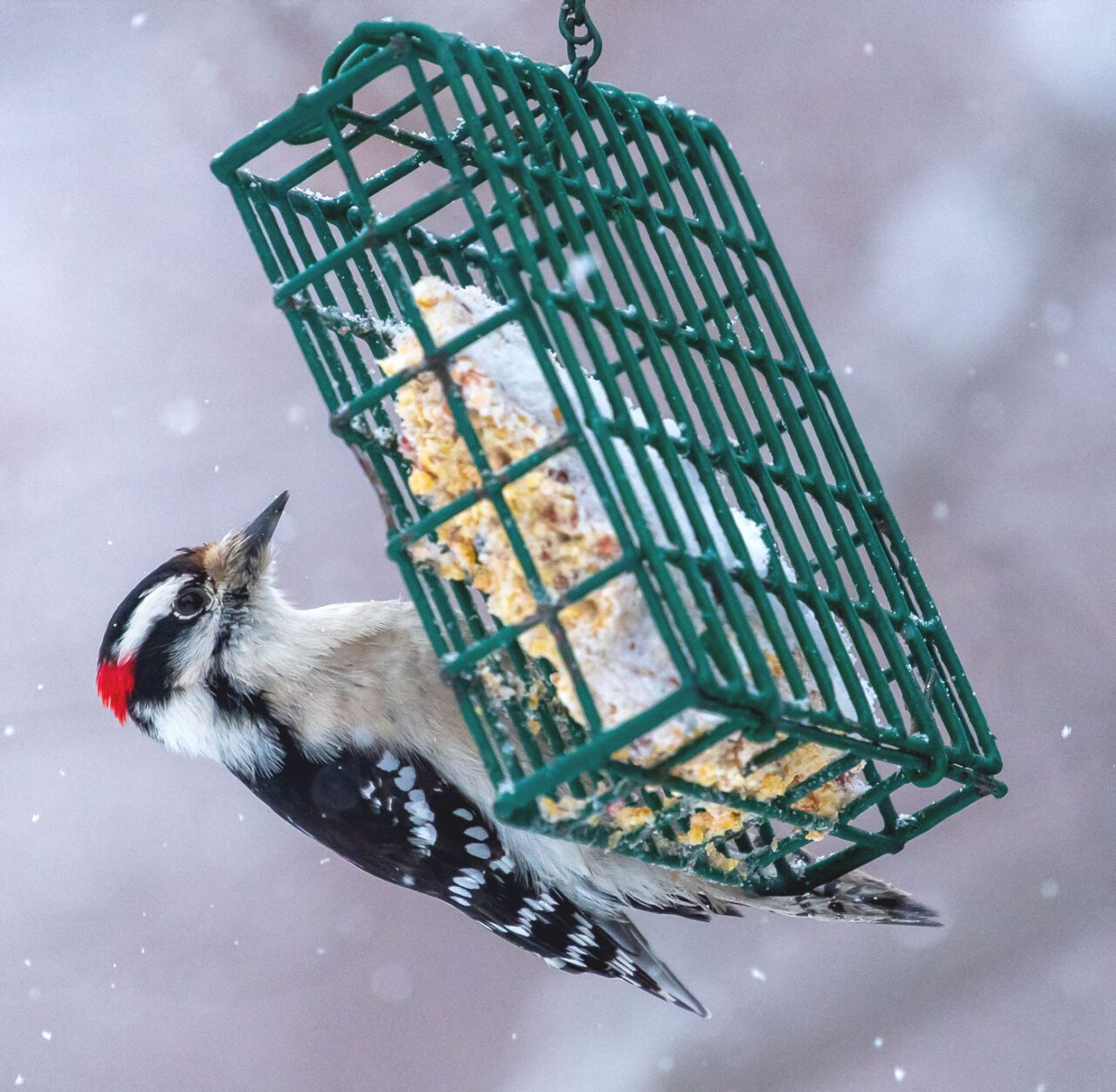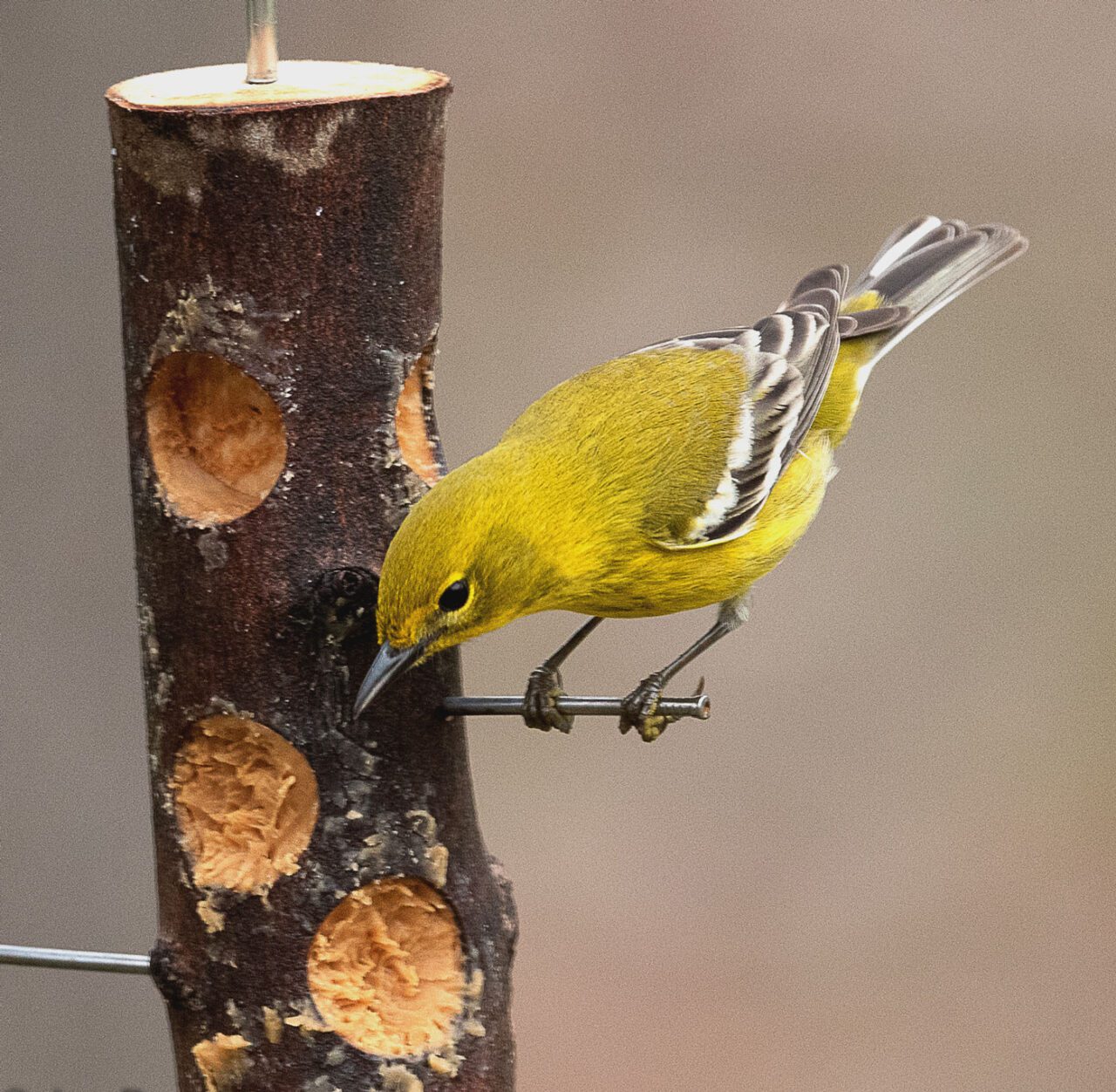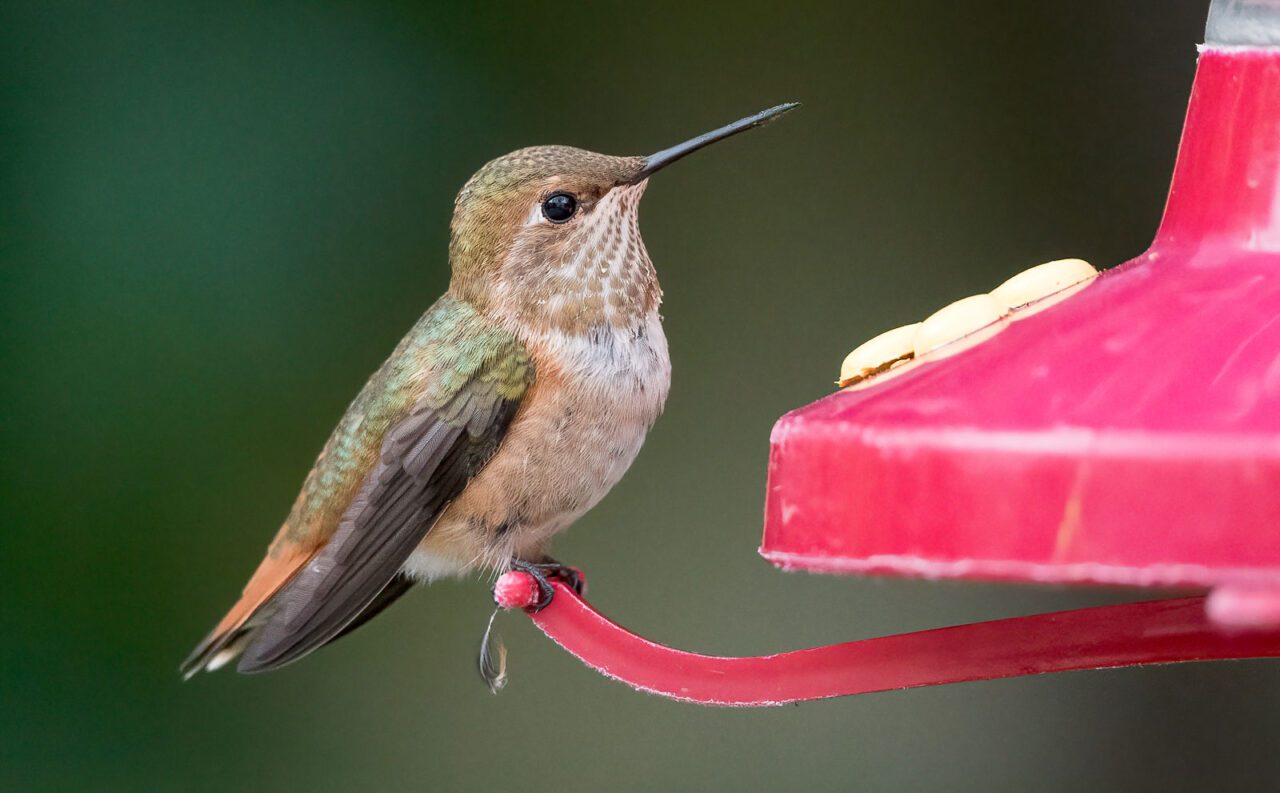Hey there, fellow bird enthusiasts! I’m Vince, and today we’re diving deep into something I’m super passionate about – finding the perfect bird feeders for our larger feathered friends. After 30+ years of birding experience and testing countless feeders, I’ve put together this comprehensive guide to help you attract those magnificent large birds to your backyard.
Why Special Feeders for Large Birds Matter
Let’s be real – you can’t expect a Blue Jay or a Woodpecker to dine comfortably at a tiny finch feeder! Large birds need:
- Sturdy construction that won’t wobble under their weight
- Wider perches and feeding ports
- Larger seed capacity to keep up with their appetite
- Durable materials that can withstand heavy usage
Top Picks for Large Bird Feeders in 2025
1. Droll Yankees Yankee Whipper
Best Overall Choice
This bad boy is my personal favorite and here’s why
- Holds 5 pounds of seed
- 4 curved perches that accommodate larger birds
- UV-stabilized polycarbonate construction
- Internal baffle for even seed distribution
- Lifetime warranty against squirrel damage
- Made in the USA
2. More Birds Giant Combo Bird Feeder
Best High-Capacity Option
Perfect if you’re feeding a crowd:
- Two 8-quart compartments
- Built-in drainage system
- Seed diverter for consistent flow
- Great for cardinals, grosbeaks, and buntings
3. Absolute II Two-Sided Feeder
Best Squirrel-Resistant Choice
This feeder is seriously tough:
- 12-pound seed capacity
- TopLoc feature for easy filling
- Powder-coated steel construction
- Double-sided feeding stations
Best Features to Look For
When shopping for large bird feeders, keep these factors in mind:
| Feature | Why It Matters |
|---|---|
| Capacity | Larger birds eat more, so aim for 5+ pound capacity |
| Material | Metal or heavy-duty plastic stands up better |
| Perch Size | At least 4-6 inches for comfortable feeding |
| Drainage | Keeps seed dry and prevents mold |
| Weather Protection | Covered feeding areas protect from rain |
Tips for Success
- Location, Location, Location
- Place feeders 10-12 feet from natural cover
- Keep away from direct wind exposure
- Ensure easy access for refilling
- Maintenance Matters
Clean feeders monthly Check for water damage regularly Replace worn parts promptly Monitor seed freshness- Feed Selection
Large birds typically prefer:
- Black oil sunflower seeds
- Safflower seeds
- Peanuts in shell
- Cracked corn
- Mixed seed blends
Common Large Bird Species & Their Preferences
Here’s what typically attracts specific large birds
Woodpeckers
- Love suet feeders
- Prefer feeders with tail props
- Need sturdy perches
Blue Jays
- Favor platform feeders
- Love peanuts and corn
- Need wide landing areas
Cardinals
- Prefer hopper-style feeders
- Like covered feeding areas
- Need stable perches
Troubleshooting Common Issues
Problem: Squirrels Taking Over
Solutions:
- Install baffles above and below feeders
- Use weight-activated perches
- Position feeders away from jumping points
Problem: Seed Getting Wet
Solutions:
- Add additional coverage
- Install drainage holes
- Use weather guards
Investment Guide
I’ve broken down typical price ranges to help you budget
-
Budget-Friendly: $30-50
- Basic but functional
- Smaller capacity
- Less durable materials
-
Mid-Range: $50-100
- Better construction
- More features
- Longer lifespan
-
Premium: $100+
- Highest quality materials
- Largest capacity
- Best squirrel resistance
- Lifetime warranties
My Personal Experience
I gotta tell ya, I learned some of these lessons the hard way! When I first started, I bought this cheap plastic feeder that literally fell apart after two weeks of Blue Jay visits. Now I always tell people – invest in quality upfront, it’ll save you money and frustration in the long run.
Seasonal Considerations
Different seasons bring different challenges:
Winter
- Use covered feeders
- Install heavier duty perches
- Consider heated options
Summer
- Provide extra ventilation
- Clean more frequently
- Monitor seed freshness
Installation Tips
Getting the setup right is crucial:
- Choose solid mounting points
- Install at proper height (5-6 feet minimum)
- Use appropriate hardware
- Level the feeder properly
- Test stability before filling
Final Thoughts
Remember, attracting large birds to your yard isn’t just about buying the right feeder – it’s about creating a welcoming environment. Start with one of our recommended feeders, be patient, and maintain consistency in your feeding routine.
I’d love to hear about your experiences with large bird feeders! Drop a comment below or shoot me an email. And don’t forget to sign up for our newsletter for more birding tips and updates!
Happy Birding!
Note: Prices and availability may vary. Check with retailers for current options and deals.

Tray or Platform Feeders

In Brief: Platform feeders attract the widest variety of seed-eating feeder birds, although they are the most susceptible to raids by squirrels and other possibly unwanted guests.
Pros:
- It can bring in grosbeaks, sparrows, juncos, towhees, jays, blackbirds, doves, quail, and other birds.
- Since there is nothing in the way, the birds can be seen while they eat.
- Many birds can visit at once because it spreads out a lot of seed.
- It’s flexible and can be hung from deck railings, posts, or stumps, or it can be mounted on them.
Cons:
- Birds like pigeons, starlings, House Sparrows, and grackles are drawn to it, and they can sometimes outnumber other species.
- Can’t keep out rain or snow; seeds can get wet and sprout, mold, or go bad.
- Bird droppings can quickly soil the seeds
- Can invite squirrels, chipmunks, deer, raccoons, and more
Tips:
- For better drainage, look for a tray with a screened bottom instead of a solid one.
- Give them enough seed for a few days, then clean and add more.
- To clean, shake the old seeds out and run water over the bottom. Wash with a dilute bleach solution every couple of weeks.
- Use an effective squirrel baffle on the feeder support
Hopper or “House” Feeders

In Brief: Hopper feeders look nice, hold lots of seed, and provide a roof to keep the seed dry and fresh. But they can be hard to clean, and they usually offer easy access to squirrels.
Pros:
- Most feeder birds like it, like cardinals, finches, jays, buntings, grosbeaks, sparrows, chickadees, and titmice.
- Holds enough seed to last several days
- Roof helps keep seed dry
- Birds are less likely to soil the food with droppings
Cons:
- Most designs offer easy access to squirrels
- If seeds get wet and stay wet for a long time without being cleaned or changed often, they can go bad.
- Harder to clean than a tray feeder
Tips:
- Mount on a pole or hang from a tree branch
- To keep squirrels away, put a baffle on the pole or rope.


In Brief: These versatile feeders are easy to hang from a line or a shepherd’s crook. Different types allow you to target different species, sizes, and numbers of birds.
Pros:
- Keeps the seeds out of the weather, which keeps them from going bad.
- Birds can’t mess up the seeds with their droppings since there is no platform.
- Sizes can be changed to offer different kinds of seeds, from small nyjer seeds to big peanuts without shells.
- You can target smaller, bigger, or faster birds depending on the tube size and perch configuration.
Cons:
- Many birds visit the same perches over and over, which can spread diseases. It is important to clean tube feeders regularly with a weak bleach solution.
- When squirrels gnaw on plastic tube feeders to make the holes bigger, they can do a lot of damage. Metal tube feeders are more resistant.
Tips:
- Always empty out the old seed first before adding new seed to tube feeders.
- A lot of tube feeders have seed below the level of the lowest feeding ports, where birds can’t get to it. Block off this part of the tube so the seed that hasn’t been used can’t grow mold.
- Squirrels can usually get at most types of tube feeders. To keep them away, use a squirrel baffle or look for a feeder with a cage around the outside that they can’t reach in and grab the seeds.

In short, a busy window feeder lets you see the birds that come to eat up close and personal and keeps birds safe from hitting the window. There are different styles, such as clear plastic hoppers that stick to windows with suction cups and strong platform feeders that hook into window frames.
Pros:
- This is good for small birds like sparrows, finches, chickadees, titmice, and more.
- Wonderful, close-up views
- Birds can see the feeder before they get to the window, which keeps them from hitting the glass.
- Easy access for refilling
Cons:
- Birds can soil the feeding tray with their droppings
- Attaching suction cups can be fiddly
Tips:
- Be patient when you first put up a window feeder. Birds might not be ready to come so close to your house for a few days or more.


In Brief: Nyjer (also called thistle) feeders attract species such as goldfinches, Pine Siskins, Redpolls, Indigo Buntings, giving these small songbirds their own spot away from larger species that may dominate sunflower feeders. Usually, they come in two styles: a tube feeder with very small holes in it and a fine mesh bag, also known as a “thistle sock.”
Pros:
- Great for bringing in some cute small species and keeping bigger species from overwhelming them.
- It is easier to control squirrels when they don’t bother with small nyjer seeds.
- A great secondary feeder that will give your “main” feeder(s) something different to eat.
Cons:
- Certain feeder visitors, mostly bigger birds, are not interested in nyjer, so this type of feeder is likely to get fewer visits overall.
- Mesh feeders, also known as “thistle socks,” get wet quickly when it rains, so only use a little seed and change it often.
- Nyjer costs more than some other bird seed, but you only need a small amount of it.
Tips:
- Pick a small duck feeder to begin with and fill it with small amounts of seed until you know how well it works in your yard.
- If you live in an area where Pine Siskins and Common Redpolls live,
- Do not worry if you see a mess under your nyjer feeder; it is not wasted seed. The only thing there is the seed shells. Your birds have already eaten the seeds, which are even smaller.


In Brief: Suet feeders are a great way to offer high-energy food to birds, especially woodpeckers, nuthatches, chickadees, titmice, starlings, jays, and sometimes Carolina Wrens and Pine Warblers. They are most often used during the cooler temperatures of winter, though you can find suet formulations that are stable during hotter temperatures. They come in two main designs: a wire cage built to hold blocks of suet; or pieces of wood (or fake wood) in which you can smear suet or peanut butter.
Pros:
- brings different kinds of birds to your feeders, and the birds often feed quickly and acrobatically.
- It’s flexible and can be attached to a tree trunk, hung from a branch, or put on a hopper or platform feeder.
Cons:
- Raw suet can quickly become rancid at temperatures above freezing
- Up to about 90°F (32°C), rendered suet stays hard. This includes most suet sold as bird food. When it gets warmer than this, suet can melt and become so soft that it mucks up feathers, which stops them from working properly and, if birds are incubating eggs, could leave a greasy layer on the eggs, which could threaten their survival. To avoid this, don’t give out suet and peanut butter when it’s hot outside.
Tips:
- To cut down on the number of starlings and jays that come to your suet feeder, look for one that turns the suet cake down. These make birds hang upside down while they eat, which helps birds that are faster and more agile, like woodpeckers and nuthatches.
- Mark out holes in small logs and carefully drill them with holes. Then, put peanut butter or rendered suet inside the holes. If it’s cool outside, try putting suet or peanut butter in cracks in the bark.

In Brief: Nectar feeders are a great way to attract these amazing, feathered jewels; you can hang a feeder almost anywhere; and they’re great even if you don’t have a yard. You might even attract other species including orioles or Cape May Warblers.
Pros:
- Easy to set up even with limited outdoor space
- A great way to attract these gorgeous aerial acrobats
Cons:
- High-sugar hummingbird food can quickly spoil, necessitating frequent cleaning
- The sweet nectar can attract ants and wasps
Tips:
- Early in the season, put up hummingbird feeders so you can see them when the birds start to migrate.
- It’s easy to make your own hummingbird food
- There’s no need to use red food coloring
- Another great way to get hummingbirds to visit is to plant native plants in your yard or in pots.
Mark’s Favorite Bird Feeder Accessory
0
